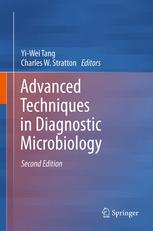

Most ebook files are in PDF format, so you can easily read them using various software such as Foxit Reader or directly on the Google Chrome browser.
Some ebook files are released by publishers in other formats such as .awz, .mobi, .epub, .fb2, etc. You may need to install specific software to read these formats on mobile/PC, such as Calibre.
Please read the tutorial at this link: https://ebookbell.com/faq
We offer FREE conversion to the popular formats you request; however, this may take some time. Therefore, right after payment, please email us, and we will try to provide the service as quickly as possible.
For some exceptional file formats or broken links (if any), please refrain from opening any disputes. Instead, email us first, and we will try to assist within a maximum of 6 hours.
EbookBell Team

4.8
64 reviewsIn the United States, hospitals annually report over 5 million cases of infectious-disease-related illnesses: clinical microbiology laboratories in these hospitals are engaged in detecting and identifying the pathogenic microorganisms in clinical specimens collected from these patients with suspected infections. Clearly, the timely and accurate detection/identification of these microbial pathogens is critical for patient treatment decisions and outcomes for millions of patients each year. Despite an appreciation that the outcome of an infectious-disease-related illness is directly related to the time required to detect and identify a microbial pathogen, clinical microbiology laboratories in the United States as well as worldwide have long been hampered by traditional culture-based assays, which may require prolonged incubation time for slowly growing microorganisms such as Mycobacterium tuberculosis. Moreover, traditional culture-based assays often require multiple steps with additional time needed for discernment of species and/or detection of antimicrobial resistance. Finally, these traditional, slow multistep culture-based assays are labor-intensive and required skilled clinical microbiologists at the bench.
Over the past several decades, advanced molecular techniques in diagnostic microbiology quietly have been revolutionizing the practice of clinical microbiology in the hospital setting. Indeed, molecular diagnostic testing in general and nucleic-acid-based amplification methods in particular have been heralded as diagnostic tools for the new millennium. There is no question that the development of rapid molecular techniques for nucleic acid amplification/characterization combined with automation and user-friendly software has greatly broadened the diagnostic capabilities of the clinical microbiology laboratory. These technical advances in molecular microbiology over the first decade of the 21st Century have profoundly influenced the physical structure of clinical microbiology laboratories as well as their staffing patterns, workflow, and turnaround time. These molecular microbiology advances have also resulted in the need for a revised and updated second edition of Advanced Techniques in Diagnostic Microbiology. This second edition again provides an updated and comprehensive description of the ongoing evolution of molecular methods for the diagnosis of infectious diseases. In addition, many new chapters have been added, including a chapter on the clinical interpretation and relevance of advanced technique results. The second edition, like the first edition, includes both a “techniques” section describing the latest molecular techniques and an “applications” section describing how these advanced molecular techniques are being used in the clinical setting. Finally, the second edition, like the first edition, utilizes a diverse team of authors who have compiled chapters that provide the reader with comprehensive and useable information on advanced molecular microbiology techniques.